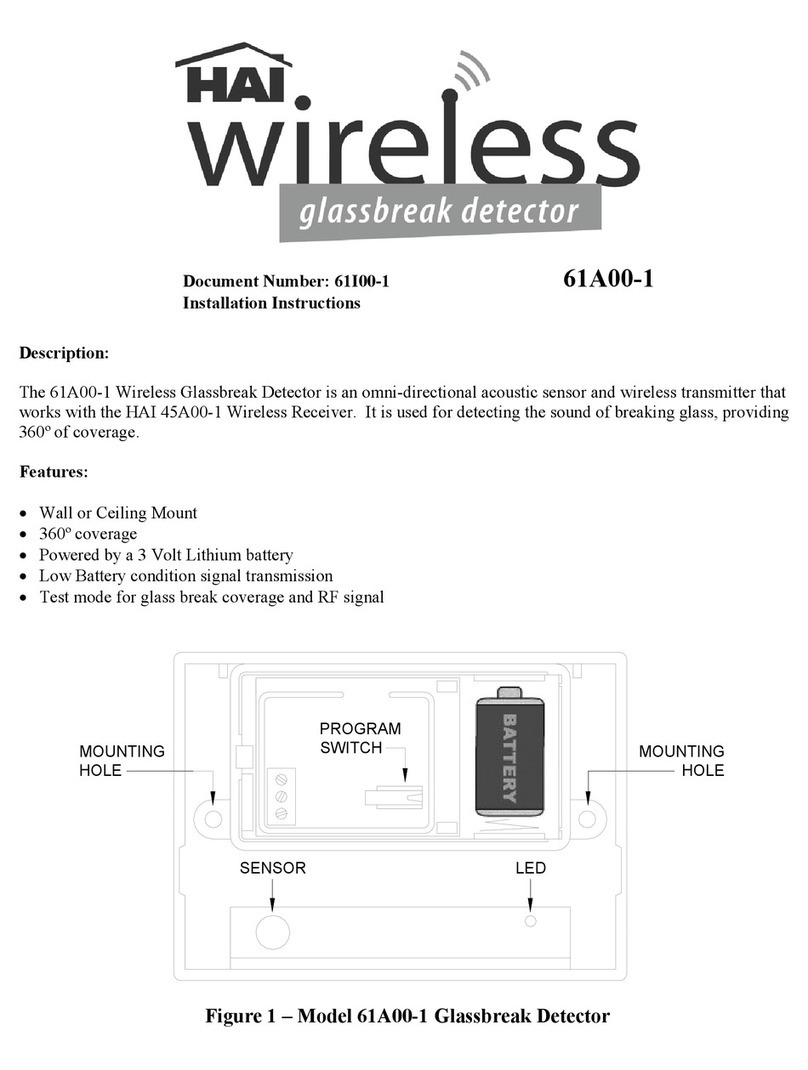
Operation:
The 47A00-1 transmits the following event data:
Supervision: A periodic transmission every 60 minutes to indicate detectors presence.
Alarm: Alarm transmission triggered by PIR intrusion detection.
Battery Low: Whenever the battery reaches a preset low level (2.4V) “Battery Low” signal will be sent with the
next message (i.e. Supervision, Alarm, etc.).
Tamper: Whenever the cover is removed from the 47A00-1 or the unit’s cover is put back on, a message will be
transmitted with “Tamper” signal.
APS: The unique APS (Automatic Power Saver) function built into the detector sustains the battery life up to
four years. The detector will transmit only when the last event has occurred more than 2 minutes prior to the
current one.
Notes:
1. After the PIR trips (because it senses motion), it will not trip again until 2-3 minutes after the last time is
senses motion. For example, if you walk into a room and the PIR trips and you are in the room for the
next 30 minutes walking around, it will not trip again while you are in the room. If you leave the room
and return 5 minutes later, the motion will trip. So to reiterate, after it trips, it won’t trip again until
there has been no motion for 2-3 minutes. There is no way to adjust the delay time or operation.
2. During normal operation, the LED will never illuminate. The LED only illuminates during test mode.
3. There are 2 different test modes: a) walk test, and b) RF test.
4. To enter the walk test mode, quickly press and release the program button. Then, for the next 2 minutes
as you walk if the path of the PIR, the LED will flash each time it senses motion.
5. To enter the RF test mode, press and hold the program button for 2 seconds. Every second the PIR will
send a fault and restore signal to the receiver. This is also the mode that is used to enroll the detector.
6. With the case on the PIR, you can enter either one of the test modes by using a magnet (like the magnet
that comes with the door/window transmitter). Place the magnet near the lower right of the case (right
next to the location of the program button). Remove it quickly to enter walk mode or hold it next to the
case for 2 seconds and then remove it to enter RF test mode.
7. You can not manually exit setup mode. The PIR will exit setup mode automatically after about 2
minutes.

























